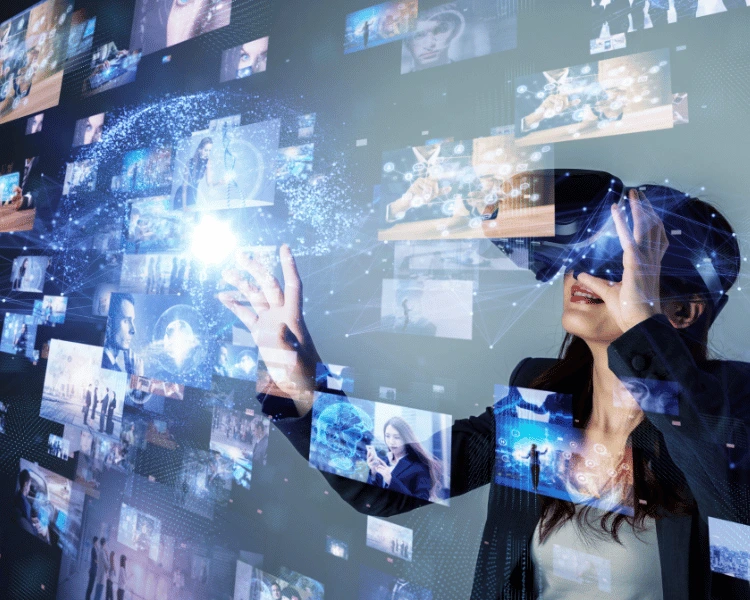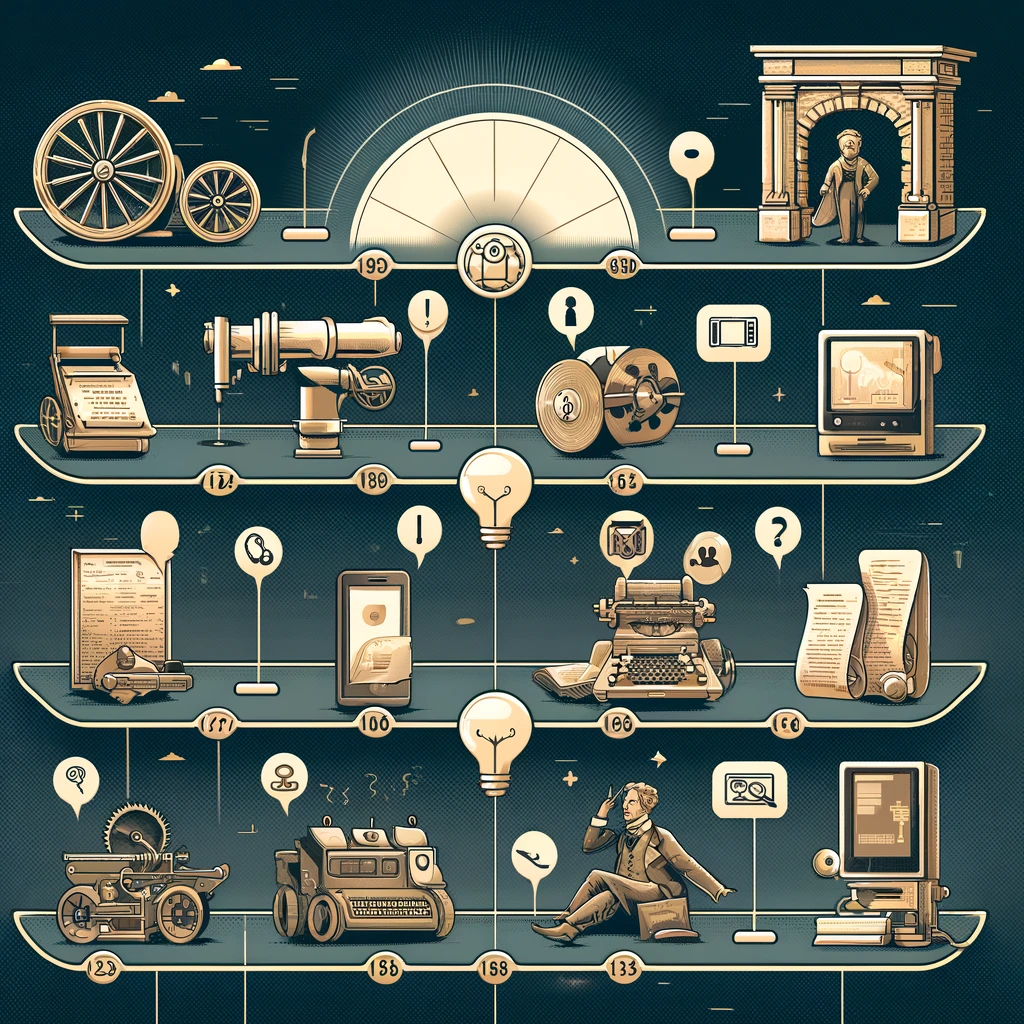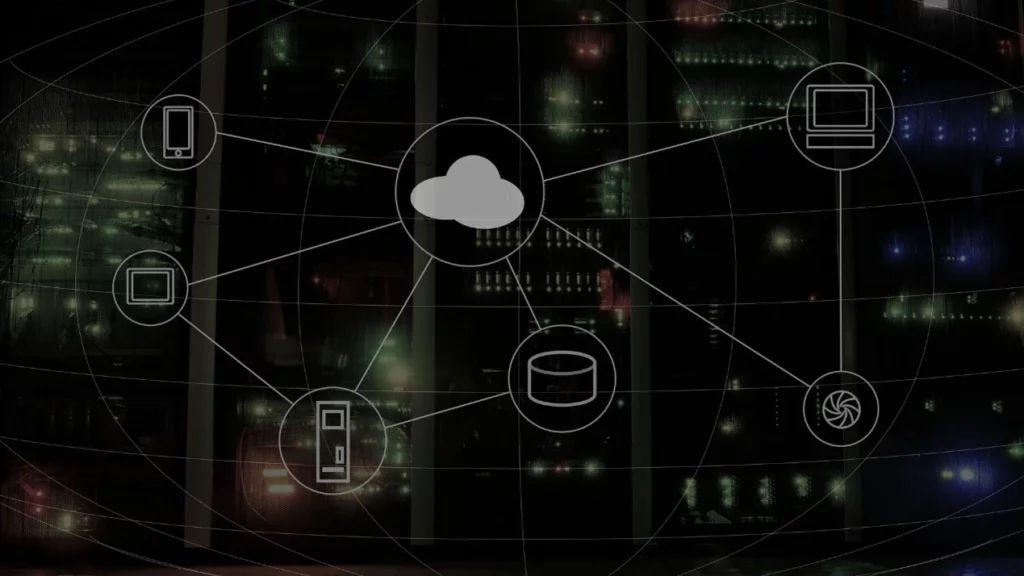Virtual Reality (VR) has emerged as a simulation of human imagination. We are in a constantly evolving digital world, but the idea of being in a computer-made world, where all boundaries fade, and imagination takes off to live a real and interactive experience, is undoubtedly captivating. It has also opened up new horizons in various fields, through its ability to stimulate senses and simulate all environments.

Virtual Reality (VR)?
Virtual reality refers to computer-generated simulations of a 3D environment, which may be similar or very different from the real world. A person can explore this simulation through specialized electronic devices that send and receive information, usually a head-mounted screen (HMD) covering the user’s eyes and ears. In addition to motion tracking and control devices such as goggles, headphones, gloves, or even body suits. By leveraging advanced graphics, motion tracking, and tactile feeding, these devices create a sense of presence, allowing the user to capture and interact with objects as if they exist in the real world.
Virtual Reality Applications
The virtual model’s ability to simulate different environments, and create new environments, made it a necessary technique in many fields.
1. Education and Training
As it has tremendous educational and training potential, it enables users to participate in realistic simulations. such as moving to historical events, traveling to distant planets, or diving deep into the oceans. This makes the experience of education more realistic at a low cost and with greater security. Realistic simulations can create a safe and controlled training environment in several areas, most notably aviation and medicine. which will sing the dangers of the real world.
2. Games & Entertainment
It may be the most popular VR application, as it revolutionized the gaming industry, allowing players to enter virtual worlds, and experience games like never before. From vibrant graphics and realistic environments to motion controls and trackers, enabling players to experience moving to fantasy worlds and interacting with characters and objects. It offers a level of realism and integration in ways that were never possible before. This level cannot be matched by traditional gaming experiences.
3. Tourism and exploration
It allows users to visit destinations around the world, explore iconic landmarks, simulate different cultures, and even visit and interact with inaccessible places. Thus, virtual reality opens a new and different dimension to virtual travel. This enables users to have an unparalleled experience without having to leave their places.
4. Engineering & Design
Virtual reality enables engineers and designers to model and simulate their designs in a virtual environment before they are built. This will provide a dynamic and interactive platform for design evaluation, enabling better collaboration with project stakeholders and decision-makers. Thus simplify the design currency, as well as achieve more efficient results.
Health Care
Using the virtual world can help alleviate pain and anxiety during medical procedures, and provide treatment for mental health conditions. and assistance in the rehabilitation of bodily injury, through the establishment of appropriate controlled environments.
VR challenges and future
As it continues to evolve, there are many trends shaping its future. The development of VR devices is the most powerful. Besides progress in graphics accuracy, and then tactile reactions, the integration of virtual reality with other techniques. Such as augmented reality (AR) and artificial intelligence (AI) for example. It will open up greater possibilities and lead to enhanced experience, expanding potential applications of the virtual world. Nevertheless, accompanying challenges such as the high cost of equipment, ethical considerations regarding the user’s privacy, as well as addiction, must be addressed. This is as virtual reality spreads more widely.
This virtual world has transcended the world of science fiction. It changed the way we interact, learn, and experience the world around us. It also provided unique ways of leisure, education, training, health care, and many more. As technology continues to progress, virtual reality holds the potential to reshape our lives and open new frontiers to human experience, we can only imagine the limitless possibilities that lie ahead in the virtual world. We are now fortunate to contemplate an important technological revolution, where the limits of reality are constantly expanding, and even imagination is no longer impossible.


